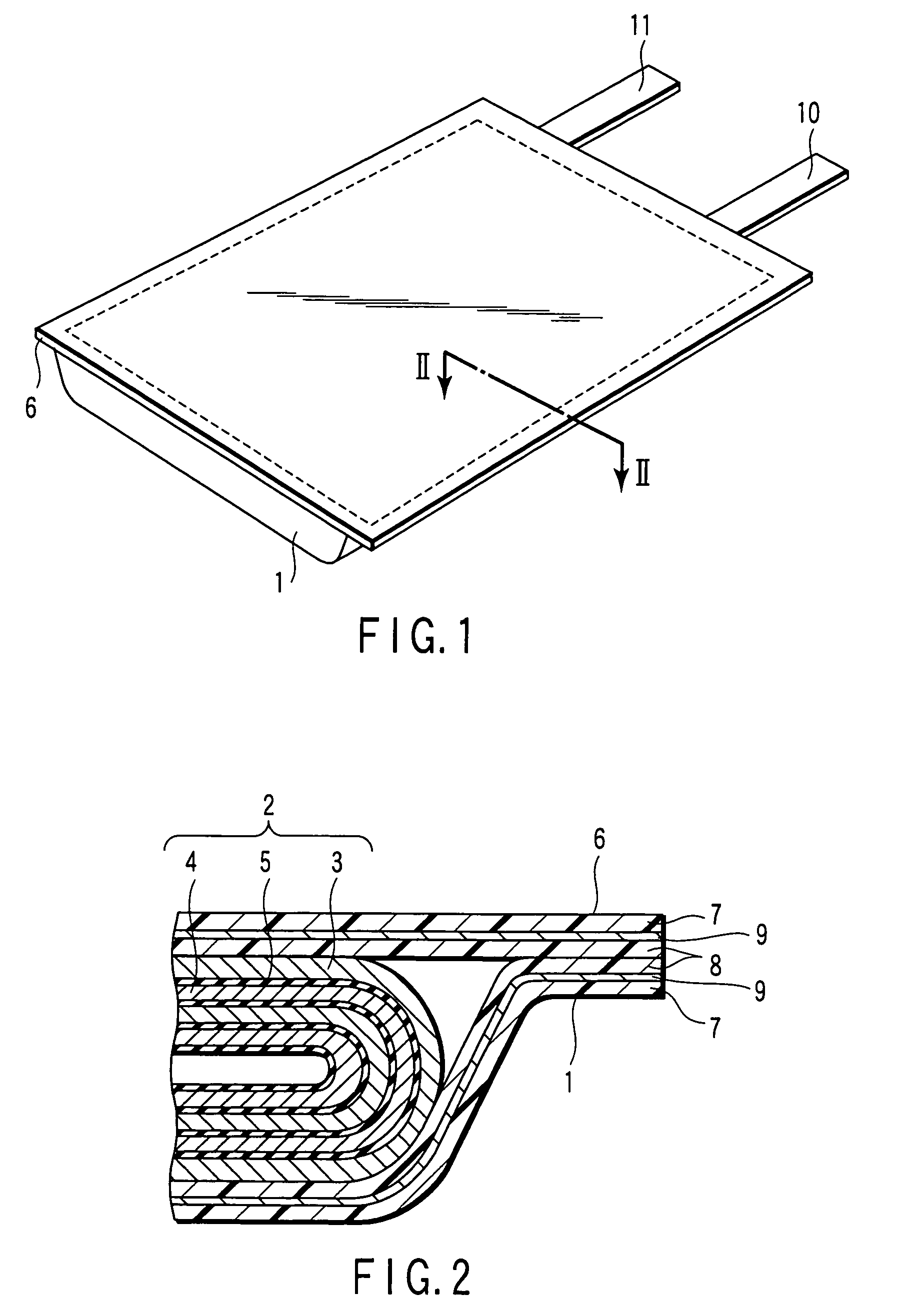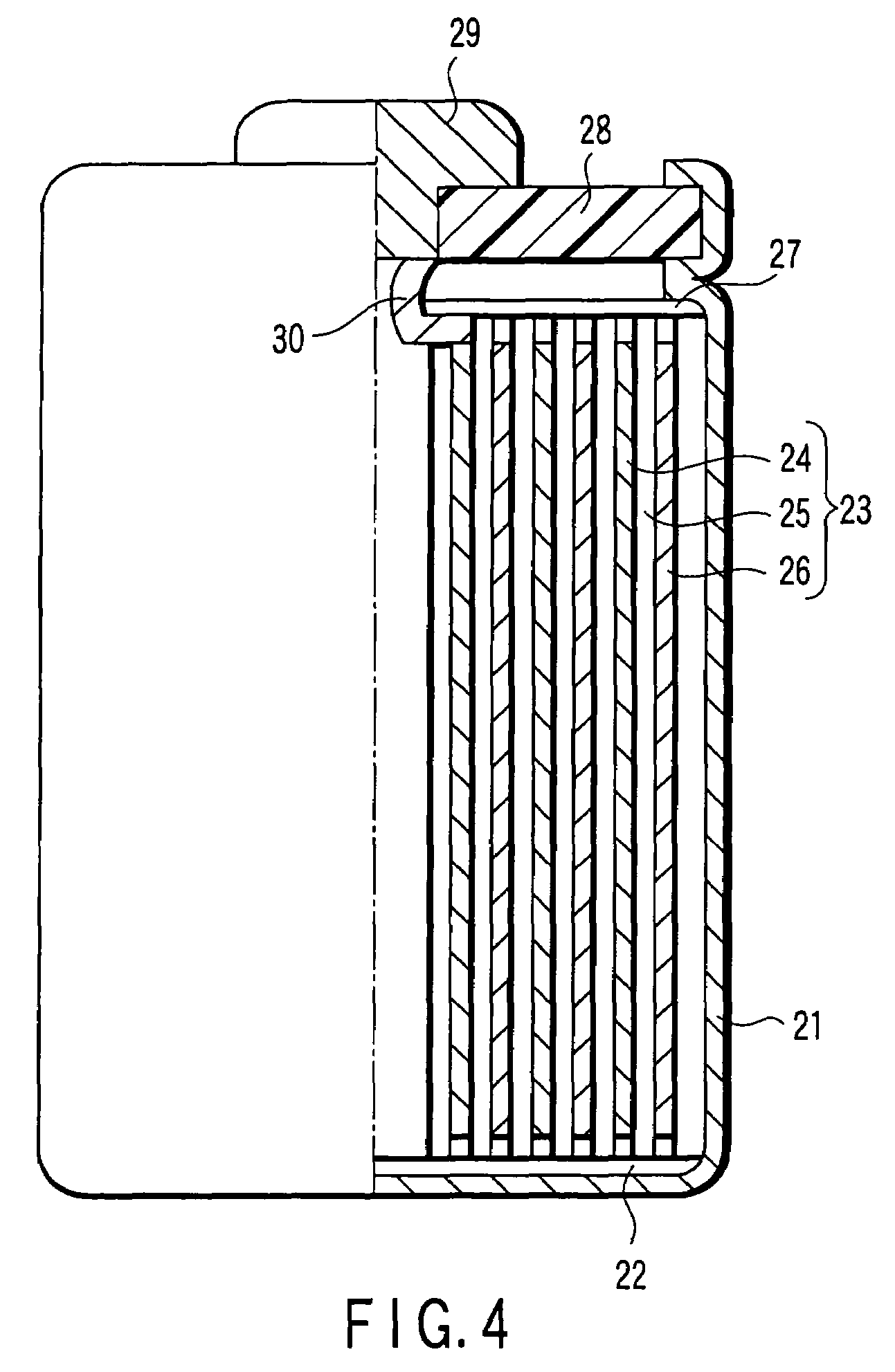Nonaqueous electrolyte secondary battery
a secondary battery, non-aqueous electrolyte technology, applied in the direction of active material electrodes, non-aqueous electrolyte accumulator electrodes, cell components, etc., can solve the problem of relatively short charge/discharge cycle life of the battery, and achieve the effect of improving the charge/discharge cycle li
- Summary
- Abstract
- Description
- Claims
- Application Information
AI Technical Summary
Benefits of technology
Problems solved by technology
Method used
Image
Examples
example 1
[0123]
[0124]A lithium composite oxide particles having a composition shown in the following Table 1 and exhibiting a particle diameter at a volumetric cumulative frequency of 90% (D90) and a peak intensity ratio (I003 / I104), both shown in the following Table 1, were prepared. As a result of the observation of the lithium composite oxide particles by means of a scanning electron microscope (SEM), the inclusion of secondary particles therein was recognized. Incidentally, the volumetric cumulative frequency of 90% (D90) and the peak intensity ratio (I003 / I104) were measured by the methods illustrated below.
[0125]
[0126]The particle sizes at volume cumulative frequency 90% was measured by laser-beam diffraction and scattering analysis. The size and volume of each particle was measured with respect to the lithium composite oxide particles. The volumes of the smallest particle, the second smallest particle, and so on, are added until the sum reaches 90% of the total volume of all particles...
examples 2-8
[0141]By following-the same procedures as explained in the aforementioned Example 1 except that the composition of the nonaqueous electrolyte was altered as shown in the following Table 2, sheet-type nonaqueous electrolyte secondary batteries were fabricated.
[0142]Incidentally, in Table 2, DEC is diethyl carbonate, MEC is methylethyl carbonate, PC is propylene carbonate, and BTS is 1,4-butylene sultone.
examples 9-17
[0143]By following the same procedures as explained in the aforementioned Example 1 except that the molar ratio of (XLi / XM), the peak intensity ratio (I003 / I104), and the particle diameter at a volumetric cumulative frequency of 90% (D90) were altered as shown in the following Table 1, sheet-type nonaqueous electrolyte secondary batteries were fabricated.
PUM
| Property | Measurement | Unit |
|---|---|---|
| particle diameter | aaaaa | aaaaa |
| molar ratio | aaaaa | aaaaa |
| molar ratio | aaaaa | aaaaa |
Abstract
Description
Claims
Application Information
 Login to View More
Login to View More - R&D
- Intellectual Property
- Life Sciences
- Materials
- Tech Scout
- Unparalleled Data Quality
- Higher Quality Content
- 60% Fewer Hallucinations
Browse by: Latest US Patents, China's latest patents, Technical Efficacy Thesaurus, Application Domain, Technology Topic, Popular Technical Reports.
© 2025 PatSnap. All rights reserved.Legal|Privacy policy|Modern Slavery Act Transparency Statement|Sitemap|About US| Contact US: help@patsnap.com



